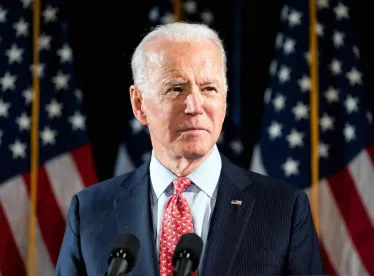13 February 2022 marked 90 days since President Joe Biden signed the Infrastructure Investment and Jobs Act (IIJA) (P.L. 117-58) into law. The Administration has made measurable progress on the road to implementation of the largest long-term investment in America’s infrastructure in nearly a century. In the last three months, President Biden has appointed former New Orleans Mayor Mitch Landrieu as Senior Adviser and Infrastructure Implementation Coordinator, signed an Executive Order establishing the Infrastructure Implementation Task Force, and worked with his team at the federal agency level to fast-track implementation of the law.
For those tracking the journey from campaign promise to bipartisan legislation to the agency initiatives that will drive infrastructure opportunities in communities across the nation, there is a lot to unpack, but here are a few notable highlights:
FEDERAL FUNDING
-
Department of Transportation (DOT) announced the Notice of Funding Opportunity (NOFO) for the Rebuilding American Infrastructure with Sustainability and Equity (RAISE) discretionary grant program, which will serve as the first discretionary funding program to accept applications under the IIJA. RAISE is funded at US$1.5 billion, representing a 50% increase in total project funding.
-
The Federal Highway Administration (FHWA) released US$27 billion in formula funds through the newly established Bridge Formula Program for states to replace, repair, and rehabilitate bridges and US$52.5 billion in FY22 (FY22) highway formula funding to make major repairs for highways and bridges.
-
The Federal Aviation Administration announced its First-Year Airport Infrastructure Grant Funding Amounts for FY22, consisting of US$2.89 billion in funds made to 3,075 airports around the nation.
-
The National Highway Traffic Safety Administration announced US$260 million to State Highway Safety Offices for highway safety programs to reduce traffic crashes.
-
The Army Corp of Engineers began using its portion of IIJA funds on civil works studies and projects, maintaining infrastructure, and repairing damage and dredge channels in response to floods and coastal storms.
-
The Department of Energy (DOE) and DOT announced nearly US$5 billion that will be made available under the new National Electric Vehicle Infrastructure Formula Program to build out a national electric vehicle charging network.
GUIDELINES, ACTION PLANS, AND REQUESTS FOR INFORMATION (RFI)
-
The White House released the Bipartisan Infrastructure Law Guidebook that provides a program-by-program description of the IIJA.
-
The White House released its Electric Vehicle (EV) Charging Action Plan, which outlined steps federal agencies will take to build out a national network of 500,000 electric vehicle chargers.
-
The DOT and DOE formed a Joint Office of Energy & Transportation focused on building out the national network of EV chargers.
-
DOE established the new Office of Clean Energy Demonstrations and launched a new Building a Better Grid initiative.
-
DOE released two RFIs related to the development of hydrogen resources and opportunities, including seeking information to help guide the agency’s solicitations for the regional clean hydrogen hubs, and input on priority areas that will advance (1) domestic manufacturing and recycling of clean hydrogen technologies and (2) electrolyzer technologies for affordable clean hydrogen production.
-
The President signed an executive order requiring large projects over US$35 million funded by the IIJA to use project labor agreements with at least one union.
-
FHWA, in conjunction with DOE, issued two separate Requests for Information to solicit suggestions from the public and stakeholders on how best to facilitate new highway and electric vehicle charging programs in the IIJA.
-
DOT released “Charging Forward: A Toolkit for Planning and Funding Rural Electric Mobility Infrastructure” to provide assistance for rural EV deployment projects.
MORE ON THE HORIZON
Over the coming weeks and months, the Biden administration will continue to announce additional funding opportunities and guidance on how new and existing programs in the IIJA will be implemented. In the absence of a full FY22 government appropriations that is still being negotiated, many new programs in the IIJA will remain in limbo and elevated obligation limits for existing programs will not fully realized. Despite this, many programs received advance appropriations in IIJA and the White House will rely heavily on these programs until long-term government funding is available.
Some of the programs that may be rolled out in the short term include:
Port Infrastructure Development Program Grants (PIDP): The PIDP invests in the modernization and expansion of U.S. ports to remove supply chain bottlenecks, ensure long-term competitiveness, resilience, and sustainability, while reducing impacts to the environment and neighboring communities. The infrastructure law expanded the program’s eligibility to include projects that improve goods movement, as well as port electrification projects, idling reduction solutions, equipment charging infrastructure, and related worker training initiatives. The DOT expects to open applications in February 2022. The program is funded at US$2 billion over five years.
Bus & Bus Facilities Competitive Grants: This existing US$2 billion program provides capital funding to replace, rehabilitate, purchase, or lease buses, and bus related equipment and to rehabilitate, purchase, construct, or lease bus-related facilities, as well as capital funding for low or no emissions bus projects. Fiscal year 2021 grant selections will be announced soon, and applications are expected to open for the FY22 grant program in the first quarter of 2022.
Infrastructure for Rebuilding America (INFRA) Grants: This program supports highway and rail projects of regional and economic significance. Applications will open in the first quarter of 2022.
National Infrastructure Project Assistance: This new competitive grant program also known as “Megaprojects” or “MEGA” supports multi-modal, multi-jurisdictional projects of regional or national significance. Selection criteria for the program will be posted on the DOT website in February 2022. This program is funded at US$5 billion over five years.
Rural Surface Transportation Grants: This new US$2 billion competitive grant program will improve and expand surface transportation infrastructure in rural areas, increasing connectivity, improving safety and reliability of the movement of people and freight, and generate regional economic growth. Applications will open in the first quarter of 2022.
Airport Terminal Program: This program provides grants to eligible airports for capital improvements for airport terminal development generally defined as development of an airport passenger terminal building, including terminal gates; access roads servicing exclusively airport traffic that leads directly to or from an airport passenger terminal building; walkways that lead directly to or from an airport passenger terminal building; multimodal terminal development; projects for on-airport rail access projects; as well as projects for relocating, reconstructing, repairing or improving an airport-owned airport traffic control tower. This program is funded at US$5 billion over five years. Applications will open shortly.
STAKEHOLDER ENGAGEMENT
A frenzy of public and private advocacy and lobbying activity has accompanied IIJA implementation. The Administration is actively seeking stakeholder input, providing stakeholders with the opportunity to: respond to requests for information on how programs should be structured; participate in federal agency panels, webinars, and conferences to better understand where and how the federal dollars will be distributed; and communicate directly with agency officials via meetings, phone calls, and emails to ensure that their perspectives on what constitutes a proper implementation process is expressed.
It has become increasingly important that interested parties stay well informed of how the process works, and how they can best position themselves for federal grant awards. Maintaining awareness of NOFOs, key application dates and deadlines, and the necessary criteria for projects to receive awards has become as critical as identifying the right programs to apply for.






 />i
/>i

